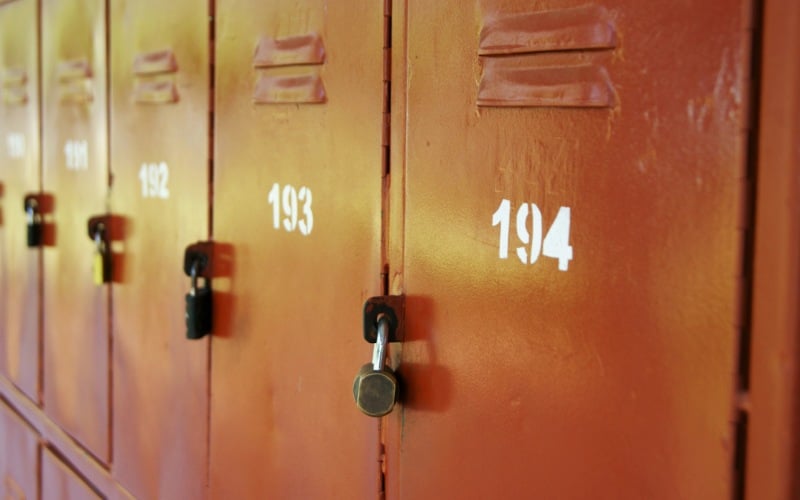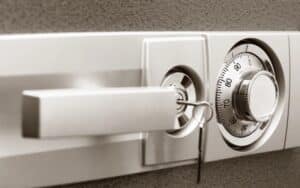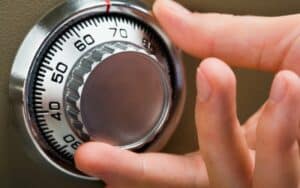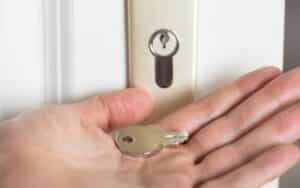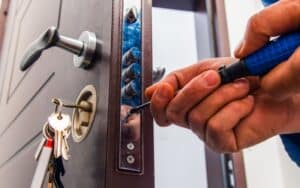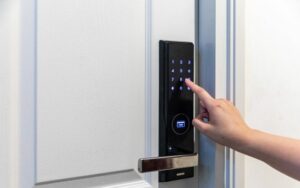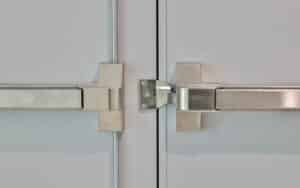Looking to secure your belongings with a combination lock? It’s a smart choice for school lockers, gym lockers, bikes, and just about anything else you’d like to keep safely locked up and away. Understanding how to operate a combination lock is straightforward once you know your unique combination – a couple of turns left and right, and presto, your lock is open!
Purchasing a combination lock is a breeze too. You’ll find them at most hardware, home improvement, and sports stores across the country. When you get your new lock, you’ll typically find the combination on a sticker on the back. Make sure to remove this sticker carefully, jot down the combination, and dispose of it. You wouldn’t want someone else stumbling upon it, would you? Now, all that’s left is to memorize your new combination, and learn how to use it.
Table of Contents
ToggleUnderstanding Combination Locks
A combination lock is a type of padlock that needs a specific sequence of numbers, also known as a combination, to unlock it. Imagine a puzzle in your pocket. Instead of a key, your combination lock relies on your memory to unlock. It’s a straightforward tool to ensure security while reducing the fear of losing a physical key.
Scenarios requiring code-based security are perfect for a combination lock. They include school lockers, gym lockers, bikes, and even a few secure boxes. It’s a versatile solution widely available at various stores such as The Home Depot, Lowes, Staples, and Walmart.
Different Types of Combination Locks
While all combination locks work on the same principle of remembering a code to unlock, specific variations cater to different needs and situations.
Multiple Dial Locks: These are the most common types of combination locks. With several rotatable discs or cams attached in a stack, these locks open when the notches on these discs align with your unique code.
Single Dial Locks: Found in safes and lockers, these locks require precise maneuvering clockwise and anticlockwise to unlock.
Knowing how to operate your combination lock efficiently is paramount for quick access. Always remember to turn it clockwise three times every time you use it.
Plethora of options, easy usage, and key-free accessibility make combination locks an excellent pick for your everyday safety needs. Armed with this knowledge, you’re now ready to master yours. Perfect security is just a combination away – and, naturally, you’re the only one who knows it.
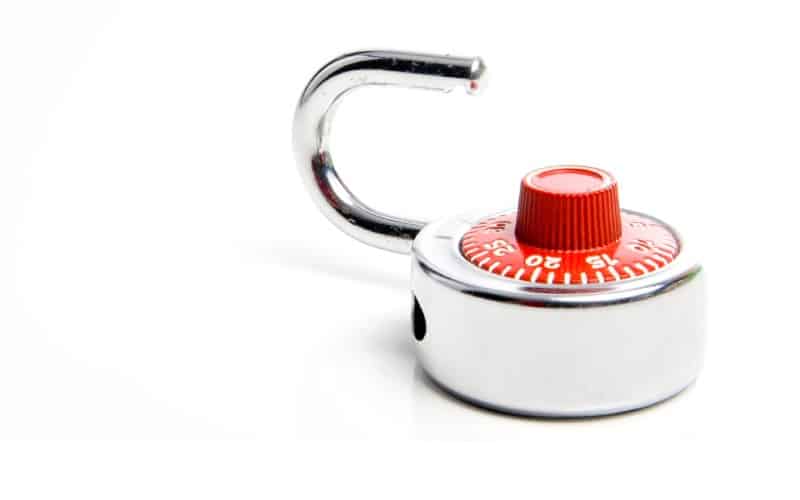
Steps to Open a Combination Lock
Understanding how to effectively navigate your combination lock can provide peace of mind while ensuring the security of your personal items. It’s not as complex as you might imagine. With the correct method, you can get it right every time.
Gather the Required Tools
Firstly, you’ll need to gather the necessary tools. In most cases, a combination lock only requires your ability to pay attention to small details. You don’t need any specialized tools because the mechanism is wholly based on the precision of your actions. But, you may need a torch or magnifying glass if the numbers on the dial are hard to read. Ensure to handle the lock with care to retain its effectiveness in keeping your items secure.
Find the Correct Starting Point
The correct starting point is crucial to accurately unlock the combination lock. Often, this involves turning the lock clockwise a certain number of times. In most cases 3 turns are necessary, starting from zero while ensuring that the first number of your combination lands on your reference point after the third turn. Always make sure to turn the dial clockwise for the first number.
Enter the Combination
Once you’ve oriented the lock correctly, it’s time to input the remaining numbers. For a typical three-number combination lock, turn the dial anti-clockwise to the second number, then clockwise to the third number. Pause briefly between inserting each number – haste often leads to errors. If the combination doesn’t open, retry from the start, ensuring to have found the correct starting point and inserted the numbers appropriately.
If the lock still refuses to open after several attempts, a locksmith might provide much-needed help. Common methods used can range from feeling for a click as the correct number approaches, to tools and resources that provide the original combination from a series of numbers stamped on the back of the lock.
Even though the varied nature of combination locks ranging from three-number to four-number variants, the fundamental principles remain the same. Master the general method and you’ll find it easy to adapt to any lock, confidently ensuring your items are well guarded.
In the grand scheme of things, it’s a worthy technique to learn. You never know when you’ll need it and it saves you the trouble of losing a key, tapping into the overall simplicity of a keyless system like a combination lock.
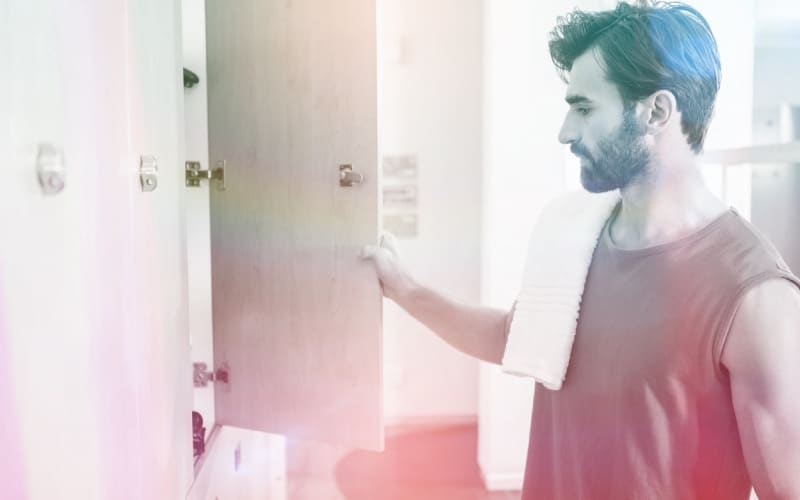
Troubleshooting Common Issues
When it comes to dealing with combination locks, issues are inevitable.
Forgot the Combination
We’ve all done it – misplaced a much-needed piece of information. Forgetting your combination to your lock can be frustrating, to say the least. But, there are strategies to help you out.
For example, combination locks often have a series of numbers stamped on the back. Locksmiths have access to special programmes where they can use this code to provide the original combo for the lock. If the code isn’t available, a locksmith will usually opt to cut it off and replace it.
When it comes to dealing with these issues, it’s a question of cost versus labour. Considering your personal circumstance, opting for a suitable solution might be the wisest choice.
Combination Not Working
In instances where your combination fails to open the lock, there’s still hope. This might be due to an error in input or a minor mechanical hitch.
One strategy used is to wrap your finger around the latch while rotating the lock counter-clockwise until it locks. Repeat the action multiple times. It requires a bit of strength, but you won’t break the lock. Also, knowing exactly where the lock stops is a trick to revealing it.
Here’s a remarkable fact. By identifying your third digit, it becomes possible to eliminate potential first and second numbers. For instance, if the third number is 0, 4, 8, 12, 16, 20, 24, 28, 32, or 36, it narrows down potential first numbers.
Carrying out such troubleshooting practices requires patience and a keen eye. But with continued effort, you’ll regain access to your secure contents.
As you continue with your lock journey, keep in mind these troubleshooting tips, and if all else fails, call D&L Mobile Locksmith. So even if an issue arises, accessing your secured items need not be a lost cause.
Keep this guide handy, and you’ll never be locked out again!
